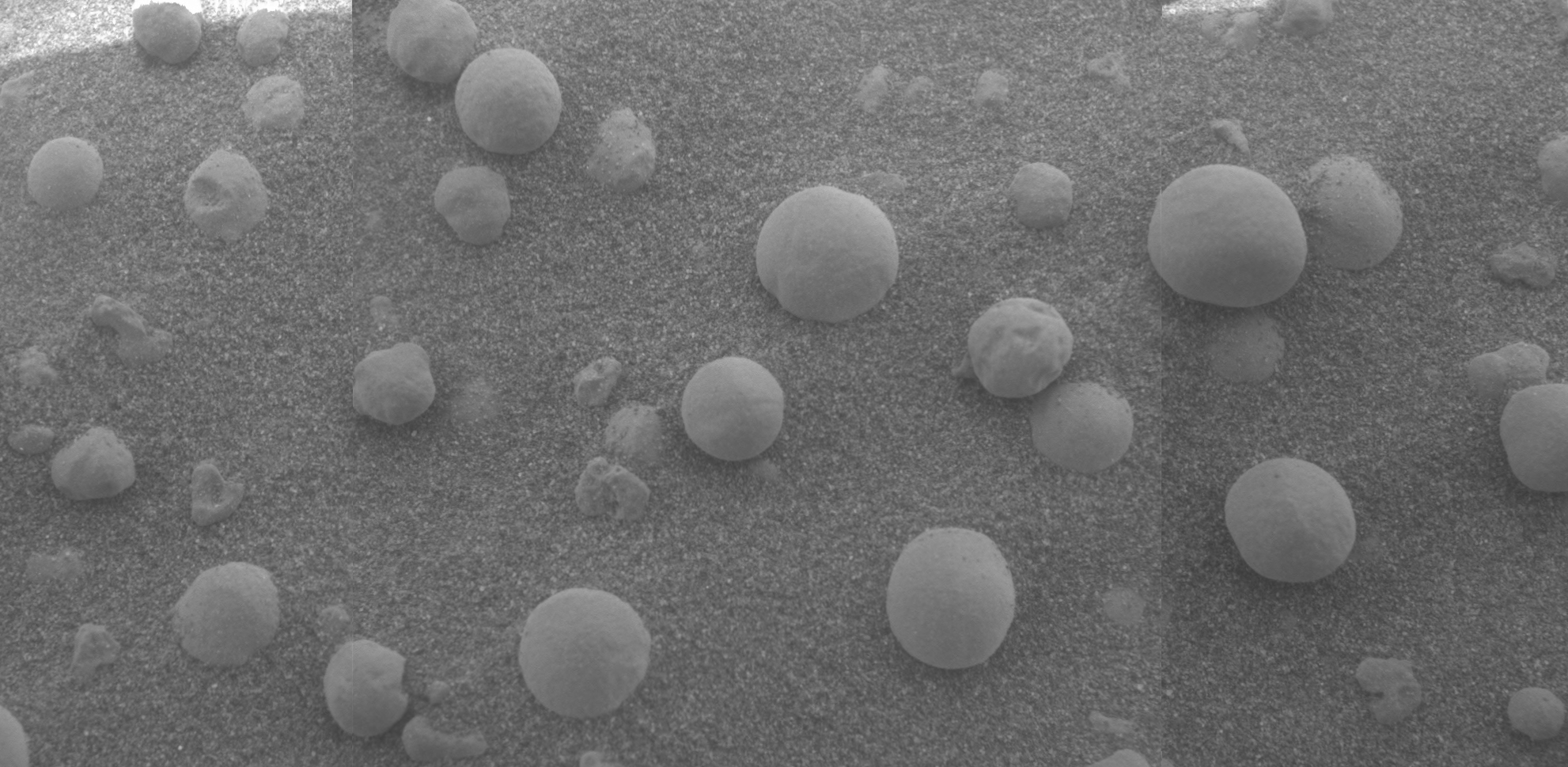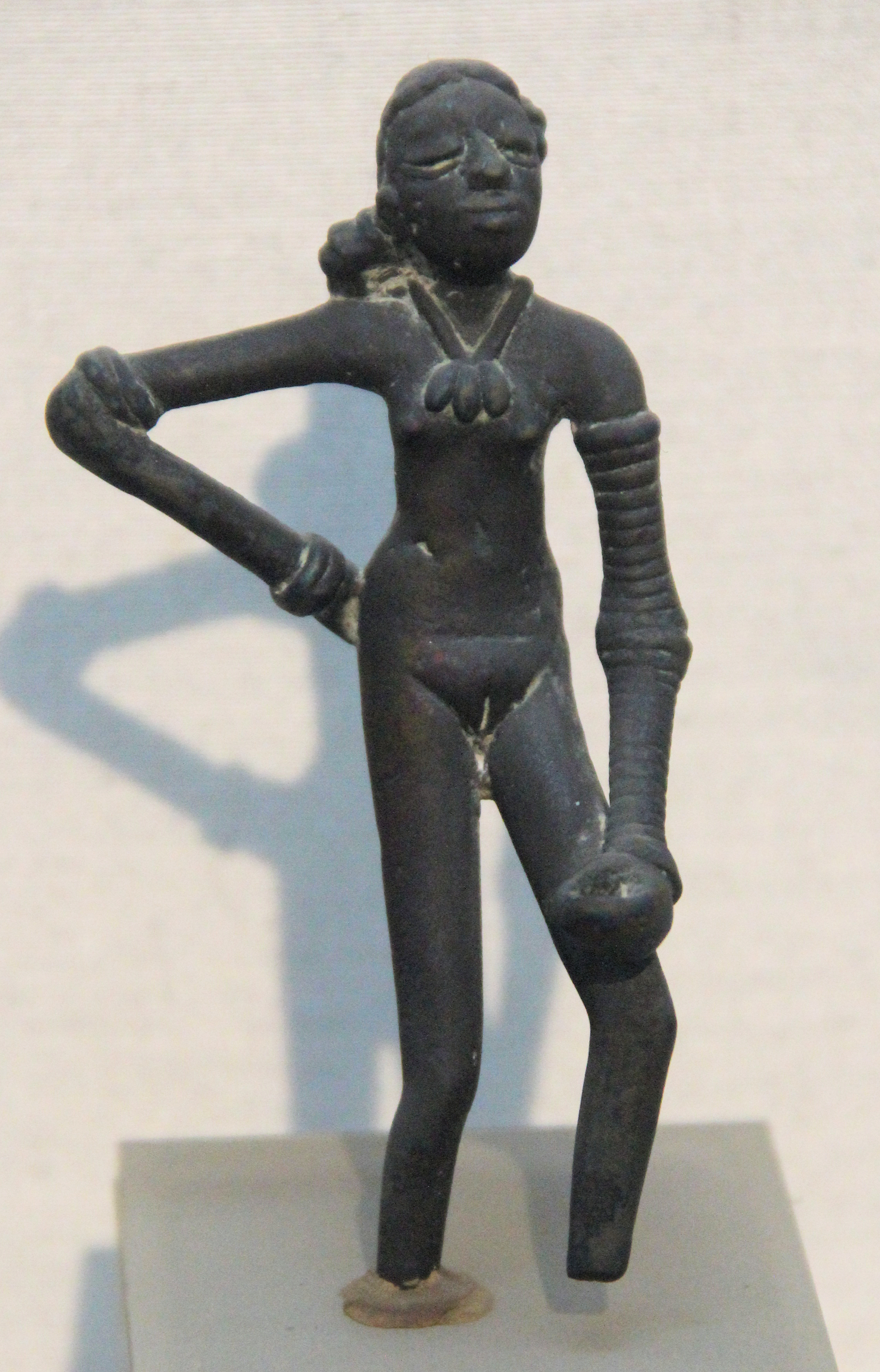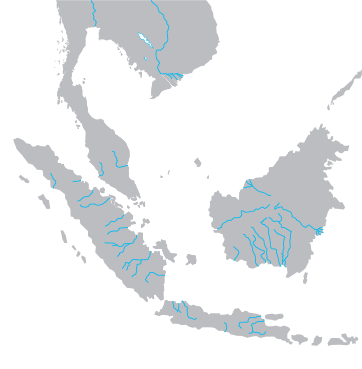|
Tambun Rock Art
Tambun rock art, is a series of Neolithic-era cave paintings at the Gunung Panjang limestone hill in Tambun, on the outskirts of Ipoh, Perak, Malaysia. The paintings were discovered on a rocky overhang in 1959 by 2/Lt R. L. Rawlings of the 2nd Battalion, 6th Queen Elizabeth's Own Gurkha Rifles. Popularly known as the "Tambun Cave Paintings" (''Lukisan Gua Tambun'' in Malay), the paintings could have been made by the ancestors of the Orang Asli and had spiritual importance. This site should not be confused with Gunung Tambun, another limestone hill that is found several kilometres to the north of Gunung Panjang. Description The Tambun rock art is on a prominent rockface on the west face of Gunung Panjang, a large karstic hill, nearly 2 kilometres long, overlooking Ipoh and the Kinta valley. The hill comprises light grey marble belonging to the Devonian limestone of the Kinta Valley. The Tambun rock art site is the largest display of neolithic paintings in Asia. They are estimat ... [...More Info...] [...Related Items...] OR: [Wikipedia] [Google] [Baidu] |
Tambun
Tambun ( Jawi: تمبون; ) is a town and a suburb of Ipoh in Perak, Malaysia. The Lost World of Tambun, a waterpark, is located there, as is the prehistoric Tambun rock art Tambun rock art, is a series of Neolithic-era cave paintings at the Gunung Panjang limestone hill in Tambun, on the outskirts of Ipoh, Perak, Malaysia. The paintings were discovered on a rocky overhang in 1959 by 2/Lt R. L. Rawlings of the 2nd Ba .... References Kinta District Towns in Perak {{Perak-geo-stub ... [...More Info...] [...Related Items...] OR: [Wikipedia] [Google] [Baidu] |
Orang Asli
The Orang Asli are a Homogeneity and heterogeneity, heterogeneous Indigenous peoples, indigenous population forming a national minority in Malaysia. They are the oldest inhabitants of Peninsular Malaysia. As of 2017, the Orang Asli accounted for 0.7% of the population of Peninsular Malaysia. Although seldom mentioned in the country's demographics, the Orang Asli are a distinct group, alongside the Malaysian Malays, Malays, Malaysian Chinese, Chinese, Malaysian Indians, Indians, and the Orang Asal, indigenous East Malaysians of Sabah and Sarawak. Their special status is enshrined in law. Orang Asli settlements are scattered among the mostly Malay population of the country, often in mountainous areas or the jungles of the rainforest. While outsiders often perceive them as a single group, there are many distinctive groups and tribes, each with its own language, culture and customary land. Each group considers itself independent and different from the other communities. What main ... [...More Info...] [...Related Items...] OR: [Wikipedia] [Google] [Baidu] |
Rock Art In Asia
Rock most often refers to: * Rock (geology), a naturally occurring solid aggregate of minerals or mineraloids * Rock music, a genre of popular music Rock or Rocks may also refer to: Places United Kingdom * Rock, Caerphilly, a location in Wales * Rock, Cornwall, a village in England * Rock, County Tyrone, a village in Northern Ireland * Rock, Devon, a location in England * Rock, Neath Port Talbot, a location in Wales * Rock, Northumberland, a village in England * Rock, Somerset, a location in England * Rock, West Sussex, a hamlet in Washington, England * Rock, Worcestershire, a village and civil parish in England United States * Rock, Kansas, an unincorporated community * Rock, Michigan, an unincorporated community * Rock, West Virginia, an unincorporated community * Rock, Rock County, Wisconsin, a town in southern Wisconsin * Rock, Wood County, Wisconsin, a town in central Wisconsin Elsewhere * Corregidor, an island in the Philippines also known as "The Rock" * Jamaica, a ... [...More Info...] [...Related Items...] OR: [Wikipedia] [Google] [Baidu] |
Cave Paintings
In archaeology, cave paintings are a type of parietal art (which category also includes petroglyphs, or engravings), found on the wall or ceilings of caves. The term usually implies prehistoric origin. These paintings were often created by ''Homo sapiens'', but also Denisovans and Neanderthals; other species in the same ''Homo'' genus. Discussion around prehistoric art is important in understanding the history of ''Homo sapiens'' and how human beings have come to have unique abstract thoughts. Some point to these prehistoric paintings as possible examples of creativity, spirituality, and sentimental thinking in prehistoric humans. The oldest known are more than 40,000 years old (art of the Upper Paleolithic) and found in the caves in the district of Maros (Sulawesi, Indonesia). The oldest are often constructed from hand stencils and simple geometric shapes.M. Aubert et al., "Pleistocene cave art from Sulawesi, Indonesia", ''Nature'' vol. 514, pp. 223–227 (9 October 2014). "us ... [...More Info...] [...Related Items...] OR: [Wikipedia] [Google] [Baidu] |
Hematite
Hematite (), also spelled as haematite, is a common iron oxide compound with the formula, Fe2O3 and is widely found in rocks and soils. Hematite crystals belong to the rhombohedral lattice system which is designated the alpha polymorph of . It has the same crystal structure as corundum () and ilmenite (). With this it forms a complete solid solution at temperatures above . Hematite occurs naturally in black to steel or silver-gray, brown to reddish-brown, or red colors. It is mined as an important ore mineral of iron. It is electrically conductive. Hematite varieties include ''kidney ore'', ''martite'' ( pseudomorphs after magnetite), ''iron rose'' and ''specularite'' ( specular hematite). While these forms vary, they all have a rust-red streak. Hematite is not only harder than pure iron, but also much more brittle. The term ''kidney ore'' may be broadly used to describe botryoidal, mammillary, or reniform hematite. Maghemite is a polymorph of hematite (γ-) with the ... [...More Info...] [...Related Items...] OR: [Wikipedia] [Google] [Baidu] |
Prehistoric Art
In the history of art, prehistoric art is all art produced in preliterate, Prehistory, prehistorical cultures beginning somewhere in very late geological history, and generally continuing until that culture either develops writing or other methods of record-keeping, or makes significant contact with another culture that has, and that makes some record of major historical events. At this point ancient art begins, for the older literate cultures. The end-date for what is covered by the term thus varies greatly between different parts of the world. The earliest human artifacts showing evidence of workmanship with an artistic purpose are the subject of some debate. It is clear that such workmanship existed 40,000 years ago in the Upper Paleolithic era, although it is quite possible that it began earlier. In September 2018, scientists reported the discovery of the earliest known drawing by ''Homo sapiens'', which is estimated to be 73,000 years old, much earlier than the 43,000 year ... [...More Info...] [...Related Items...] OR: [Wikipedia] [Google] [Baidu] |
Kinta Valley
The Kinta Valley (Malay language, Malay: ) is a geographical feature and conurbation in central Perak, Malaysia, surrounding and including the state capital Ipoh. Historically the Kinta Valley was very rich in tin, and their mines have been among the most productive in the world. The valley is formed by the Kinta River, a tributary of the Perak River, which flows between the Titiwangsa Mountains, Titiwangsa and Keledang Range, Keledang Ranges. It forms the largest tin field along the Siamese-Malayan peninsula tin belt. It has been mined since ancient times by indigenous peoples but more intensively mined by the Malaysian Chinese, Chinese and Europeans since the end of the nineteenth century. Today, the modern Kinta district is one of the ten administrative districts of Perak. In 2018, the valley was declared Malaysia's second national geopark. Geographic definition The Kinta Valley Conurbation is officially known as Ipoh-Seri Iskandar-Lumut Development Promotion Zone () in the ... [...More Info...] [...Related Items...] OR: [Wikipedia] [Google] [Baidu] |
Devonian
The Devonian ( ) is a period (geology), geologic period and system (stratigraphy), system of the Paleozoic era (geology), era during the Phanerozoic eon (geology), eon, spanning 60.3 million years from the end of the preceding Silurian period at million years ago (Megaannum, Ma), to the beginning of the succeeding Carboniferous period at Ma. It is the fourth period of both the Paleozoic and the Phanerozoic. It is named after Devon, South West England, where rocks from this period were first studied. The first significant evolutionary radiation of history of life#Colonization of land, life on land occurred during the Devonian, as free-spore, sporing land plants (pteridophytes) began to spread across dry land, forming extensive coal forests which covered the continents. By the middle of the Devonian, several groups of vascular plants had evolved leaf, leaves and true roots, and by the end of the period the first seed-bearing plants (Pteridospermatophyta, pteridospermatophyt ... [...More Info...] [...Related Items...] OR: [Wikipedia] [Google] [Baidu] |
Malay Language
Malay ( , ; , Jawi alphabet, Jawi: ) is an Austronesian languages, Austronesian language spoken primarily by Malays (ethnic group), Malays in several islands of Maritime Southeast Asia and the Malay Peninsula on the mainland Asia. The language is an official language of Brunei, Malaysia, and Singapore. Indonesian language, Indonesian, a standardized variety of Malay, is the official language of Indonesia and one of the working languages of East Timor. Malay is also spoken as a regional language of Malays (ethnic group), ethnic Malays in Indonesia and the Thai Malays, southern part of Thailand. Altogether, it is spoken by 60 million people across Maritime Southeast Asia. The language is pluricentric and a ISO 639 macrolanguage, macrolanguage, i.e., a group of Mutual intelligibility, mutually intelligible speech varieties, or dialect continuum, that have no traditional name in common, and which may be considered distinct languages by their speakers. Several varieties of it ar ... [...More Info...] [...Related Items...] OR: [Wikipedia] [Google] [Baidu] |
Ipoh
Ipoh (, ) is the capital city of the Malaysian States and federal territories of Malaysia, state of Perak. Located on the Kinta River, it is nearly north of Kuala Lumpur and southeast of George Town, Penang, George Town in neighbouring Penang. As of the Census in Malaysia, 2020 census Ipoh had a population of 759,952, making it the List of cities in Malaysia by population, ninth-largest city in Malaysia by population and the fourth most populous state capital, after Johor Bahru, Shah Alam and George Town, Penang, George Town. In recent years, Ipoh's popularity as an international tourist destination has been significantly boosted by efforts to conserve its British Empire, British colonial-era architecture. The city is also well known for its Ipoh cuisine, cuisine and natural attractions, such as its limestone hills and caves within which Buddhist temples were built. Ipoh's location between Kuala Lumpur and George Town, Penang, George Town has made it a major land transportati ... [...More Info...] [...Related Items...] OR: [Wikipedia] [Google] [Baidu] |
Limestone
Limestone is a type of carbonate rock, carbonate sedimentary rock which is the main source of the material Lime (material), lime. It is composed mostly of the minerals calcite and aragonite, which are different Polymorphism (materials science), crystal forms of calcium carbonate . Limestone forms when these minerals Precipitation (chemistry), precipitate out of water containing dissolved calcium. This can take place through both biological and nonbiological processes, though biological processes, such as the accumulation of corals and shells in the sea, have likely been more important for the last 540 million years. Limestone often contains fossils which provide scientists with information on ancient environments and on the evolution of life. About 20% to 25% of sedimentary rock is carbonate rock, and most of this is limestone. The remaining carbonate rock is mostly Dolomite (rock), dolomite, a closely related rock, which contains a high percentage of the mineral Dolomite (mine ... [...More Info...] [...Related Items...] OR: [Wikipedia] [Google] [Baidu] |
Cave Paintings
In archaeology, cave paintings are a type of parietal art (which category also includes petroglyphs, or engravings), found on the wall or ceilings of caves. The term usually implies prehistoric origin. These paintings were often created by ''Homo sapiens'', but also Denisovans and Neanderthals; other species in the same ''Homo'' genus. Discussion around prehistoric art is important in understanding the history of ''Homo sapiens'' and how human beings have come to have unique abstract thoughts. Some point to these prehistoric paintings as possible examples of creativity, spirituality, and sentimental thinking in prehistoric humans. The oldest known are more than 40,000 years old (art of the Upper Paleolithic) and found in the caves in the district of Maros (Sulawesi, Indonesia). The oldest are often constructed from hand stencils and simple geometric shapes.M. Aubert et al., "Pleistocene cave art from Sulawesi, Indonesia", ''Nature'' vol. 514, pp. 223–227 (9 October 2014). "us ... [...More Info...] [...Related Items...] OR: [Wikipedia] [Google] [Baidu] |








